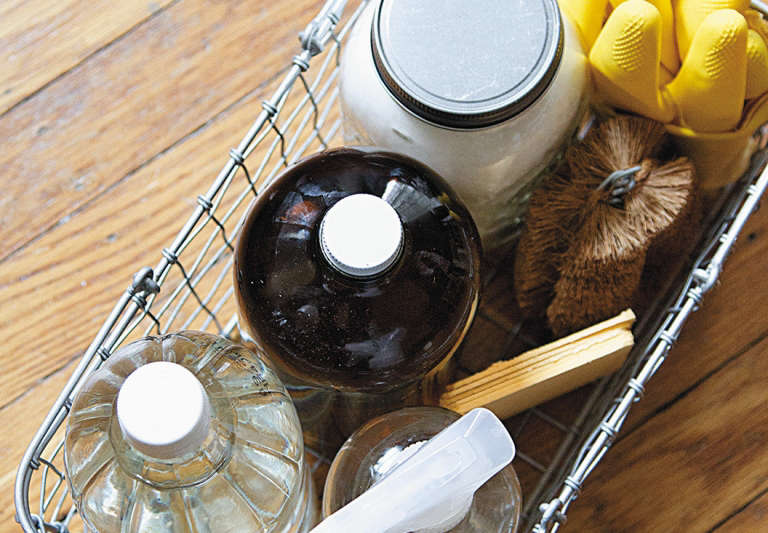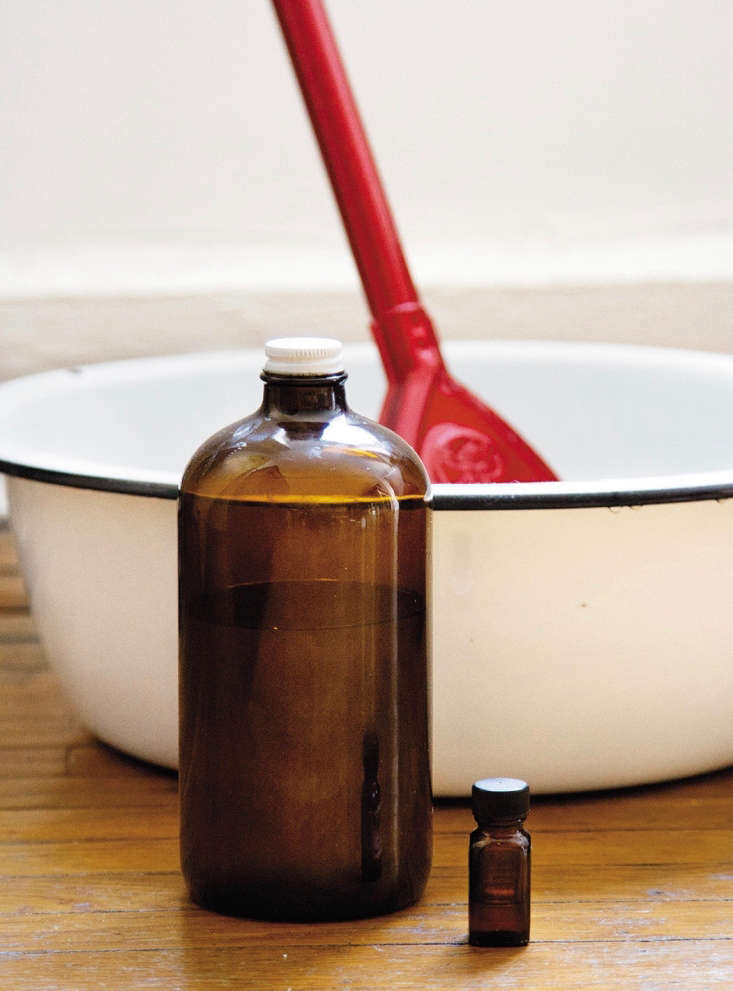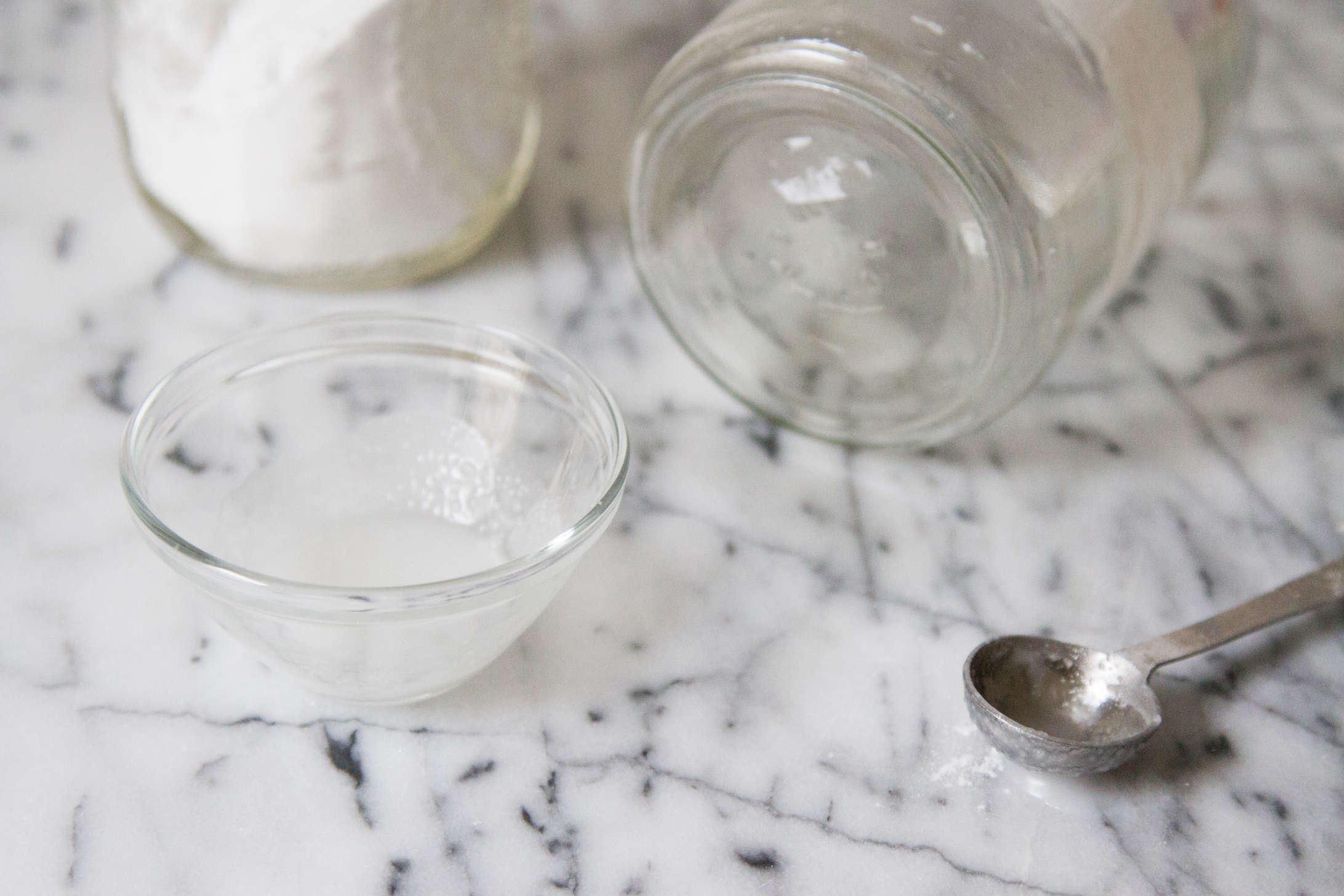
Welcome to Your Weekend Project, featuring how-tos and ideas from our archives for an organized and inspired home.
Open an under-the-sink cabinet and you’ll likely find a hodgepodge of half-empty plastic bottles: countertop sprays, floor cleaners, shower cleaners, and more. Do you really need all these products? In our opinion, the answer is no. Embrace a simpler approach and banish the single-purpose cleaning supplies; the result is less clutter, fewer chemicals, and a home that’s every bit as clean as you’d like it to be.
I like to keep a few hardworking ingredients on hand: castile soap, tea tree oil, white vinegar, baking soda, and coconut oil, which I mix and match to create natural cleaning formulas. Here are three effective cleaning recipes that I stand by.
Photography by Erin Boyle from Simple Matters.

1. All-Purpose Cleaner

I attach a standard spray nozzle to an old glass vinegar bottle. Fill it with a few tablespoons of castile soap (a 16-ounce bottle of unscented Dr. Bronner’s Castile Soap is $10.99 from Dr. Bronner’s), 10 drops or so of tea tree oil (a four-ounce bottle of Tea Tree Oil is $12.45 from Amazon), and enough water to top it off. I use it for everything from wiping down counters and sinks to cleaning up spills.
2. Stainless Steel Polish

3. Sticky Residue Remover

I’ve spent more time than I care to admit scraping off the last bits of label gunk on glass jars or bottles I plan to repurpose. Here’s my solution: Mix together equal parts baking soda and coconut oil to form a thick paste. Apply directly to the sticky mess and rub with a warm rag until the residue slips away.

For more domestic science stories, read:
- Domestic Science: How to Clean a Washing Machine
- How to Do Laundry Like the French (Yes, They Do It Better!)
- Expert Advice: Our Editors’ Most Pressing Cleaning Questions, Answered (Including How to Clean Stainless Steel Surfaces)






Have a Question or Comment About This Post?